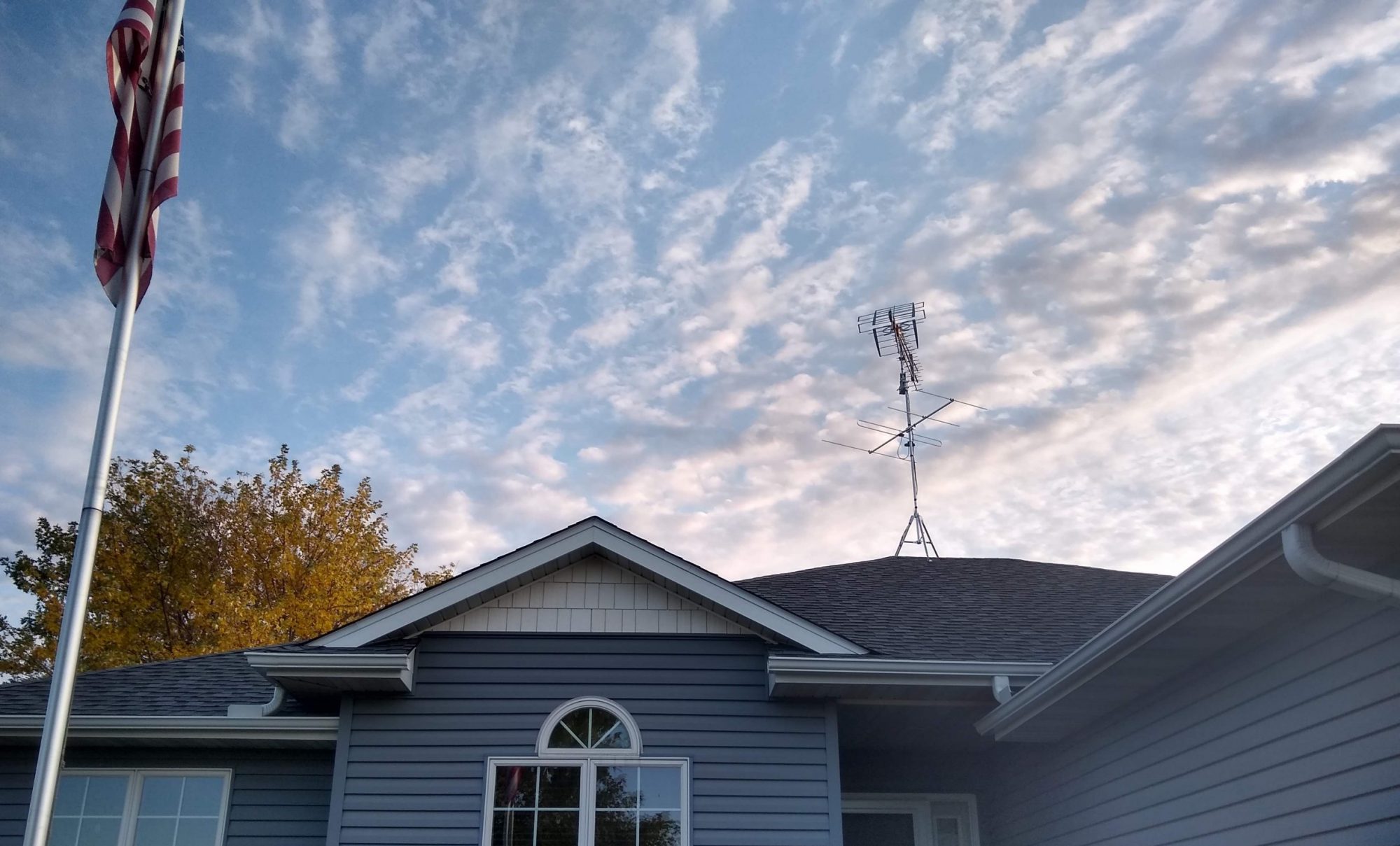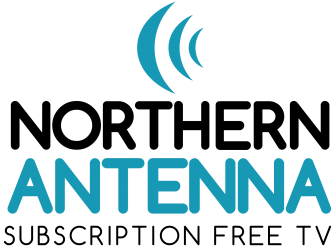-Ensure that RG-6 or RG-6QS coax is used for all in-wall runs (NOT RG-59).
-Black (U/V-resistant) cable MUST be used for all outdoor cable runs. White (non-UV-resistant) cable quickly degrades when exposed to sunlight.
-All cable runs should be one continuous piece of cabling running directly back to the distribution point – NO IN-WALL SPLICES AND NO IN-WALL SPLITTERS!!!
-If you want both satellite TV and antenna service simultaneously, run two sets of coax to each location.
-All coax runs should have quality compression connectors installed, NOT twist-on or hex crimp connectors! (Better yet – leave the coax un-terminated and have us do the terminations).
It’s best to have all coax, Ethernet and phone wiring converging at a central distribution point, often located in a basement or utility room. Structured wiring panels and equipment racks are sometimes employed as well. If the distribution point is in a utility room with concrete walls, consider installing a plywood panel on which equipment, shelving and cable tie-downs can be mounted. We recommend installing a power strip/surge protector or uninterruptible power supply near the distribution point, in order to accommodate the numerous devices powering today’s home IT & A/V infrastructure.
A list of items that might be installed a the distribution point (Items with an “*” require a power outlet):
TV Antenna:
-Ground block
-*Preamplifier power supply
-*Distribution amplifier (if required)
-*Avant X programmable amplifier (if required)
-Coax splitters
-Rotator wire splice point (if required)
-*Over-The-Air DVR/Network-connected tuners
FM Antenna:
-Ground block
-*Preamplifier power supply
-*Distribution amplifier (if required)
-Coax splitters
-TV/FM diplexer (if required)
Satellite TV:
-Ground block
-*Satellite LNB power supply
-*Multiswitch and power supply (if required)
-Coax splitters-Antenna/Satellite diplexers (if required)
Cable TV:
-Ground block
-*Powered splitter/Coax splitters (if required)
Cell Signal Booster:
-Ground block
-*Cell Booster unit
-Coax splitter (if required)
Phone:
-*VoIP/Cable Phone interface (if required)
-Phone wiring punch block
Internet/networking:
-*Cable/DSL/Satellite Internet/Fiber/Satellite Internet modem
-*Router
-*Ethernet switch (if required)
-*Power over Ethernet (PoE) power supplies (if required)
-*Network Attached Storage (NAS) server
-*Over-The-Air DVR system
Outdoor Antennas: One option would be to run coax AND a ground wire (#17CCS, #10 Copper or #8 Aluminum) to the attic and/or up through an attic vent to the roof, close to where the attic antenna is to be installed. Ensure black (U/V-resistant) cable is used. Alternatively, a conduit tube (‘smurf tube’) can be run between the attic and distribution point.
Starlink Satellite Internet: The Starlink dish comes with a pre-attached 100′ Ethernet cable, which much be connected to the power supply unit. The pre-attached Ethernet cable has large ferrite choke beads, which require drilling at least a 7/8″ hole. We recommend purchasing a Cable Routing Kit with the dish, which includes cable grommets and the like. It is also useful to have a site survey done beforehand to determine where the dish will need to be mounted. This can be achieved with the Starlink app on your phone. For more information, see our Starlink page.
Cell Booster Systems:
Before building, you will want to consider whether a cell booster system may be necessary to ensure un-interrupted call quality and fast data speeds.
The first step would be to take out your phone, walk around the property and observe how strong the service is. If it’s below 2-3 bars outside, you may want to consider a booster system.
If you plan on using metal/stucco siding, or foil-backed insulation, which block cell signal, you will definitely want to consider one.
Cell boosters require specialized, low-loss cabling, such as RG-11 or LMR-400 (depending on the system) and an outdoor antenna. Additionally, one or more indoor antennas need to be mounted in specific locations to ensure even coverage – also using specialized, low-loss cabling.
If you are considering a cell booster, please contact us. We will need to perform a site survey, review blueprints to optimize antenna placement and make accommodations for cabling installation. Additionally, we can use our test equipment to determine which cell carrier offers the strongest signal at your location.
Fixed Wireless Internet: At some rural locations, Fixed Wireless Internet service is the best option available. For MN residents, we have prepared a list of Fixed Wireless providers (by county). We recommend contacting the provider(s) in your area to determine if they serve your location. They may have also have to perform a site survey.
Reception of fixed wireless signals is strictly line-of-sight. At some locations, a roof-mounted antenna may be all that’s needed. Other locations may require a remotely-mounted antenna, tower or a relay system. We can assist in installation, if necessary.
Most Fixed Wireless providers use a receiving antenna that connects to Ethernet, paired with an Ethernet Power inserter (PoE) located indoors, so you will need to run black (UV-resistant) Ethernet between the distribution point and the mounting site. Running a flexible conduit tube from the distribution point the attic is an alternative (the cable can be run through a roof vent and through the conduit)

